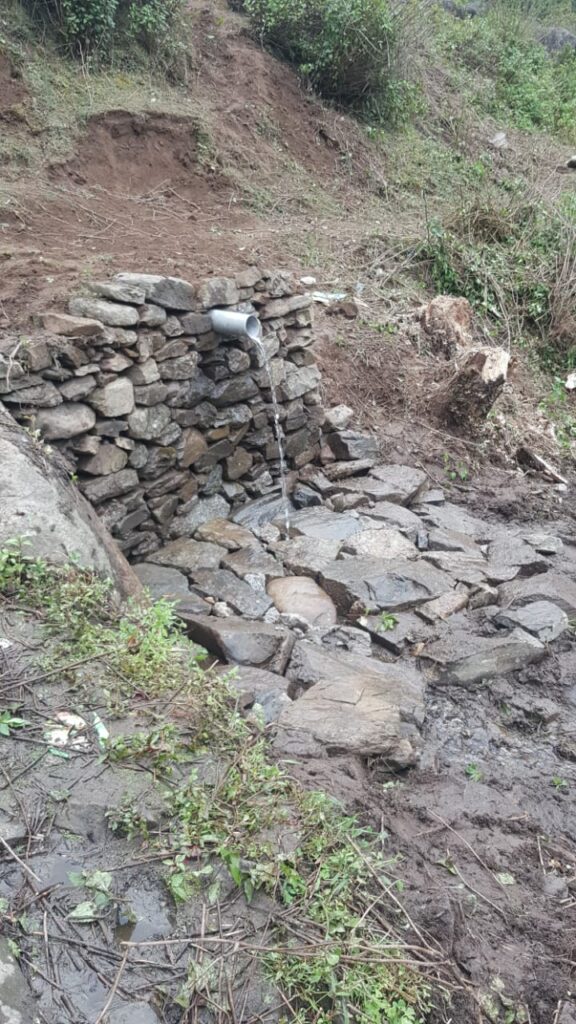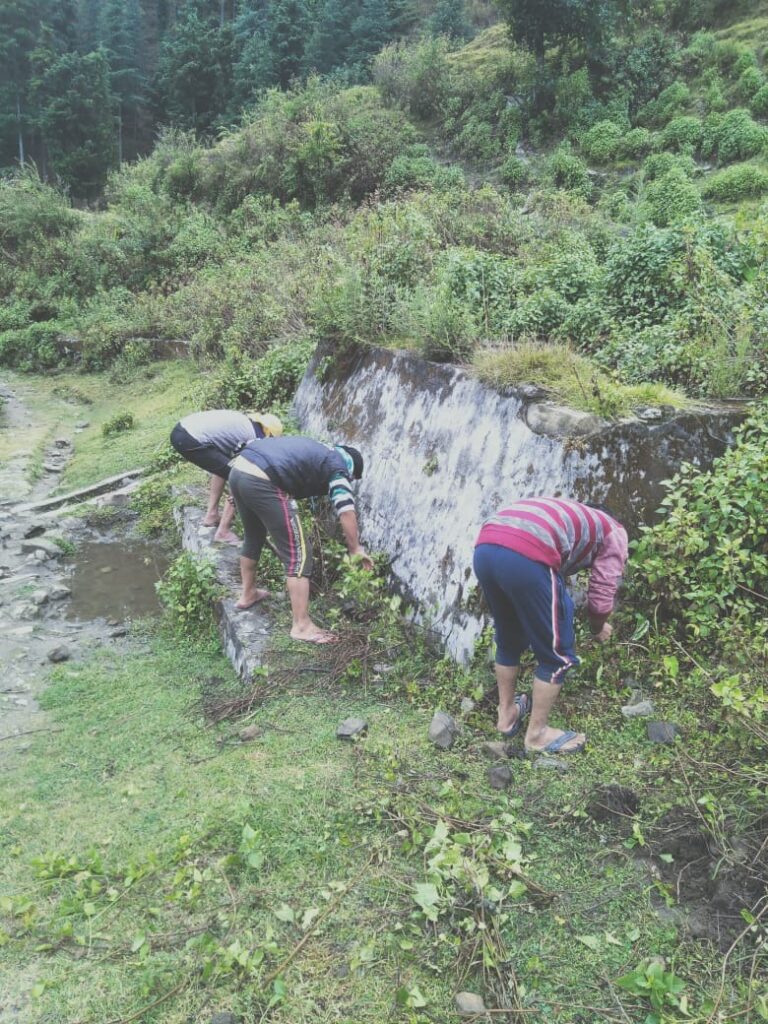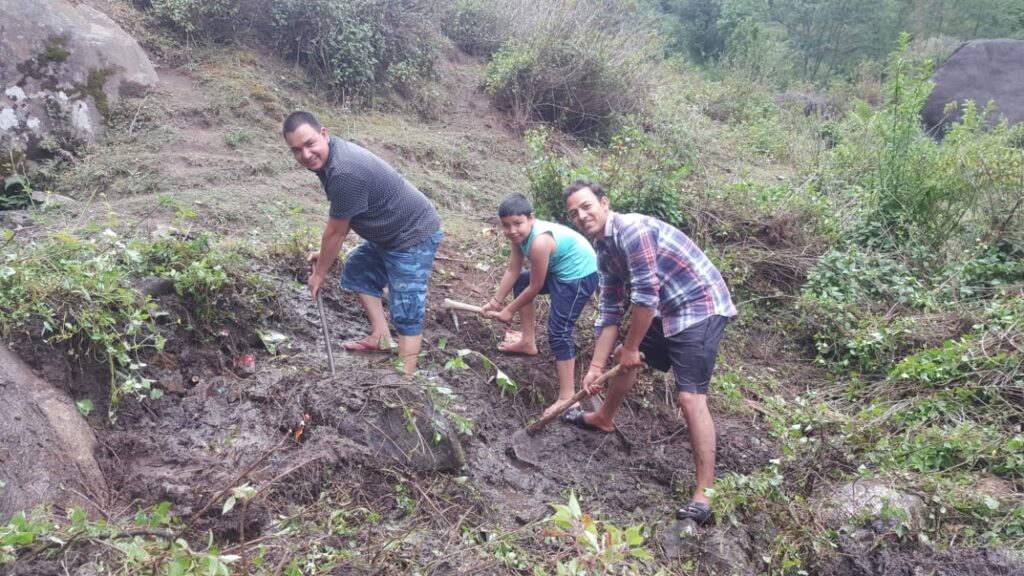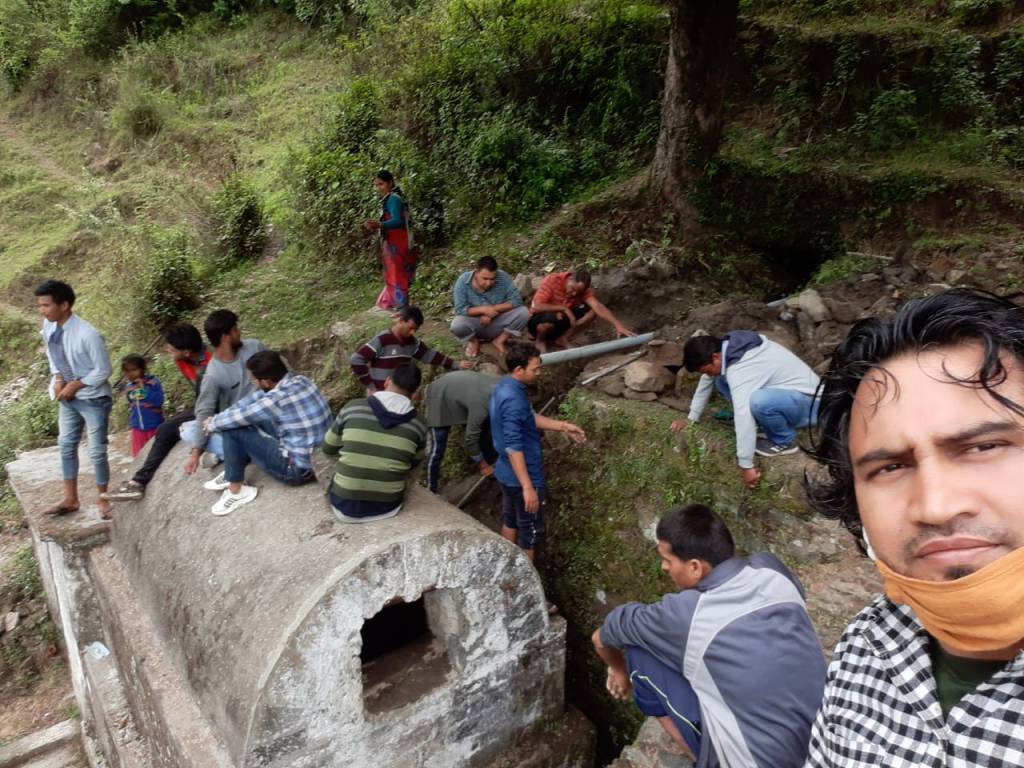In a recent decision, the Uttarakhand government has announced to revive 5000 traditional water streams and recharge points in the Himalayan state under the MGNREGA policy. The government also said that local level committees will be formed to oversee the implementation of the project. CM Trivendra Singh Rawat has also set an ambitious target to revive one river in each district.
Traditional water sources have been the lifeline for most villages in hill areas of Uttarakhand. Known as Panyar, Naula, Chhoi, Dhara these freshwater sources have been serving the rural population with potable and other domestic water requirements since time immemorial.
Sadly, with changing time, lifestyle and the introduction of tap water facilities these water sources and structures have been facing the negligence of users and apathy of the government. These time-proven water sources can still serve the people if restored and taken proper care by village communities. The story of Pokhri village is a step in this direction.
The hilly districts in the state are witnessing a reverse migration trend particularly of youths migrated to different parts of the country to earn livelihoods – in the wake of the COVID-19 epidemic and subsequent lockdowns. As per reports over 1.5 lakh migrated natives have returned to the state out of more than 2 lakh who have applied.
Pokhari is a small village located in Chauthan Patti a region comprised of 72 villages in Thailisain block. The village has a population of around 300 and so far about 46 people have returned to their homes from various parts of the country.
Most of the around 1500 returnees in the area under quarantine in primary schools have voluntarily engaged in constructive activities. The youth in the quarantine of the Pokhari have joined the trend and started cleaning water bodies, plantation work in and around school premises.

(Rejuvenated water stream in Pokhari by the locals. Credits: Pokhari Yuva Sangathan)
“The springs were surrounded with bushes, due which water supply had fallen, so first we removed the weeds and plugged the leakage to make it accessible and to increase the water supply,” said Hemant Kala who used to work as a driver in Delhi and now actively involved in restoration work.

(Locals working to restore traditional water tanks. Credits: Pokhari Yuva Sangathan)
“The chari (tank) was built to collect potable water for the livestock, but it was full of muck and silt serving no purpose. A thick layer of invasive weed pagal jhad (the mad weed which is officially known as Ram Bansa or Mexican weed) had grown around it. The village youth first cleaned the tank and uprooted the weeds to make the tank usable. Now we are trying to revive the recharge source of the tank to fill it,” shared Vivakanand Kala another youth who was working in the private sector in Delhi and had returned to the village during the lockdown.
The village youth have also formed a local committee namely Pokhari Yuva Sangthan a few years back. Vivekanand Kala who also heads the committee says the water crisis has inspired them to take up restoration work of water sources and structures on a priority basis.

(Children actively engaged in the restoration activities. Cedits: Pokhari Yuva Sangathan)
“Disconnected with the water source, the tank had dried up, so we cleaned it, tapped the original water source again by laying a 6 meter long pipe and now it is getting adequate water supply,” says a joyous Surendra Bhandari who works in Delhi in a leading newspaper as a web designer and is also part of the village committee.
As per Surendra Bhandari natural water sources are a boon for hilly people and cannot be compared with pipe water in taste and quality. “They serve cold water in summer and lukewarm in winter, elderly still prefer panyara (water spring) water over tap supply,” adds Surendra.
The villagers have not stopped at this and turned to one more defunct panyara .
After repairing it, the team including young kids smiled and quenched their thirst with water from the same water source. The restored panyara is close to a common path and they say even people passing by can find drinking water there.
“The effort is fully self-motivated and self-financed, we have been given no government aid for the work”, comments Vinod Kumar the village headman who fully supports and even lends a helping hand to the initiative. As per him the youths are voluntarily working on the restoration of village water structures thus making great effort to find local solutions to the ongoing water crisis.
Though he is happy with the effort but feels that unlike past now it is very difficult to meet all water requirements through local sources. The team feels that in the process of development, the traditional water sources have been neglected and they deserve better attention and awareness, particularly among village communities.

(PYS team members after completing the restoration work. Credits: Pokhari Yuva Sangathan)
The initiative by the youth of Pokhari shows that with little efforts and work, local water sources can be restored. It also shows the way ahead and presents a good example for the government which aims to execute a similar project across the state. For reviving traditional water sources, local communities will play a crucial role. The government should reach out to such local groups and citizens and ensure that they play a key role in maintaining the water sources.
These are personal views of the author.
(Bhim Singh Rawat works at SANDRP)
This article was originally published in SANDRP, and has been published here with slight modifications.
Banner Image: Samrat Mukherjee, Down To Earth